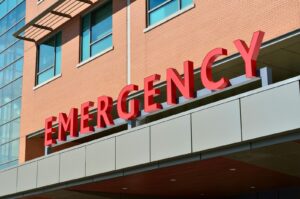People get peak exposure to air pollution while cycling
People are most likely to get their peak exposure to air pollution if they are cycling, a new study has found.
Academics at several universities including Imperial College London and Hasselt University in Belgium looked at exposure peaks during the day to black carbon, a component of particulate matter (PM).
The researchers found that exposure peaks contribute substantially to people’s total exposure to air pollution, and that cyclists are most vulnerable to experiencing these peaks.
The study, published in the journal Atmospheric Environment, looked to explore the relationship between long-term average exposure to air pollution — which is used to inform air quality standards — and short-term exposure, which can also contribute to negative health impacts.

Researchers found that participants in a study were most likely to experience ‘exposure peaks’ to black carbon air pollution when in transport, especially while they were cycling. Image: Alexander Baxevanis (CC BY-SA 2.0)
175 volunteers of different genders and ages across Belgium, Spain and the United Kingdom monitored their personal exposure to black carbon for a minimum of two 24-hour periods per person, covering a total of 2053 monitoring days.
Using a peak detection algorithm, researchers found that participants were exposed to 2.8 peaks in black carbon exposure per person per day, with the average black carbon concentration during a peak hitting 4206 ng/m³ (4.206µg/m³).
Participants were only exposed to peak concentrations of black carbon 5.5% of the time, but this contributed to 21% of their total exposure.
Transport only took up 8% of participants’ time overall but was found to be responsible for 32.7% of these peaks, with 24.1% of measurements made in transport categorised as peak exposure.
While the occurrence of peaks varied substantially over time, across environments and transport modes, the study found that most exposure peaks took place at rush hour, during weekdays and in the cold season.
Cyclists were found to be most likely to encounter peaks in black carbon exposure, with 34% of peaks taking place while participants were cycling.
The researchers found that daily average black carbon exposure was only moderately correlated with the frequency of exposure peaks, but the increased when long-term exposure was considered.
The authors of the study said their ‘peak detection algorithm’ could be used in real-time air pollution alerting systems, such as London Air, to help citizens self-manage their exposure to air pollution and consequently their personal health.
Rachel White, head of public affairs at the walking and cycling charity Sustrans, said: ‘Whilst the study has found that people on a cycle were likely to be exposed to peaks in air pollution, it is important to remember that the health benefits of being physically active from cycling will always outweigh any costs from exposure to air pollution in this country.
‘What this research highlights is the need for fewer polluting vehicles on our roads and for more journeys to be made by foot and on cycle — cleaning up the air for everyone and reducing physical inactivity at the same time.
‘To achieve this, we need governments to increase investment in high-quality cycling infrastructure such as protected cycleways. These won’t just get more people cycling but will also increase the distance between a person on a cycle and traffic — reducing their exposure to harmful pollutants.’
The findings follow a previous study from the University of Surrey’s Global Centre for Clean Air Research (GCARE), which advised cyclists to plan alternative routes at specific times to avoid breathing in black carbon.
The study found that London cyclists travelling towards Liverpool Street Station during the evening rush hour were exposed to more pollutants than those who travelled in the morning, and twice as much black carbon than those who took an alternative, ‘greener’, route.
















